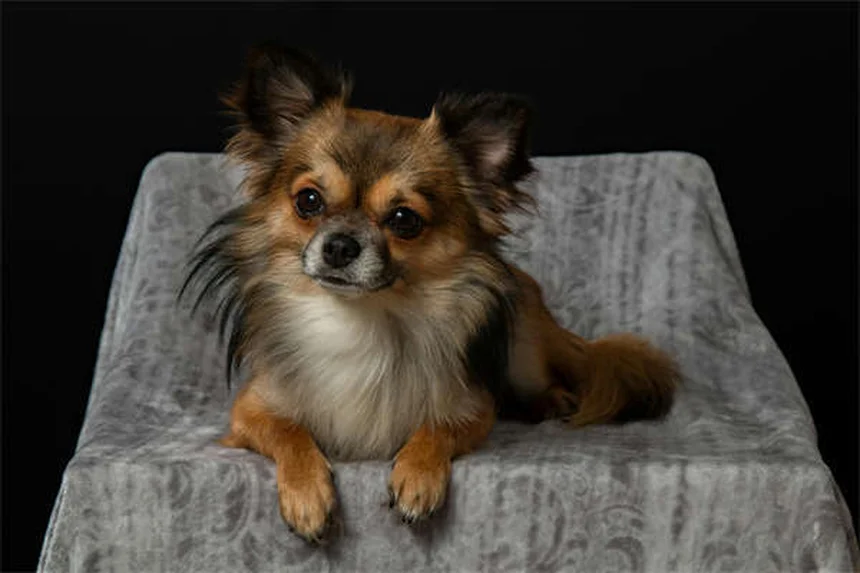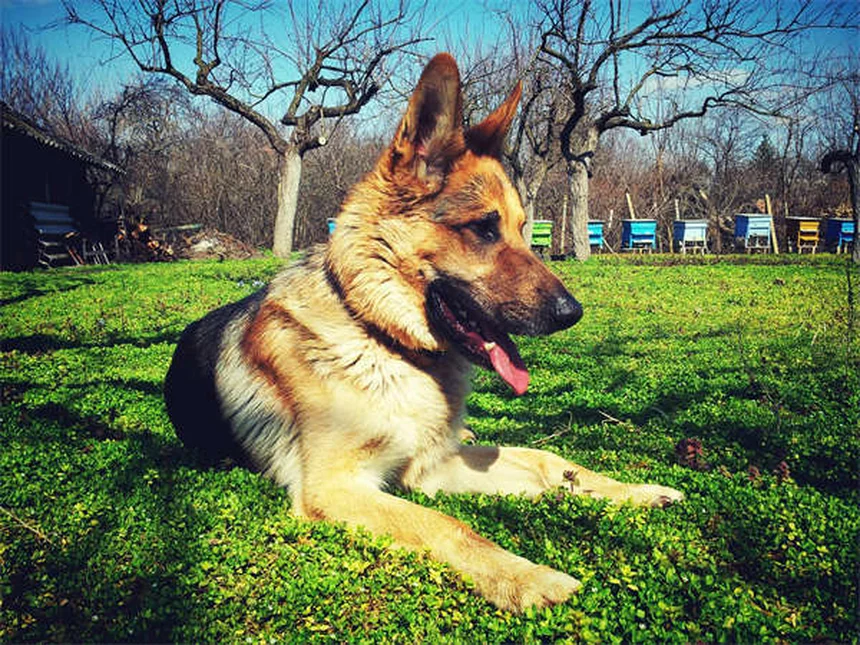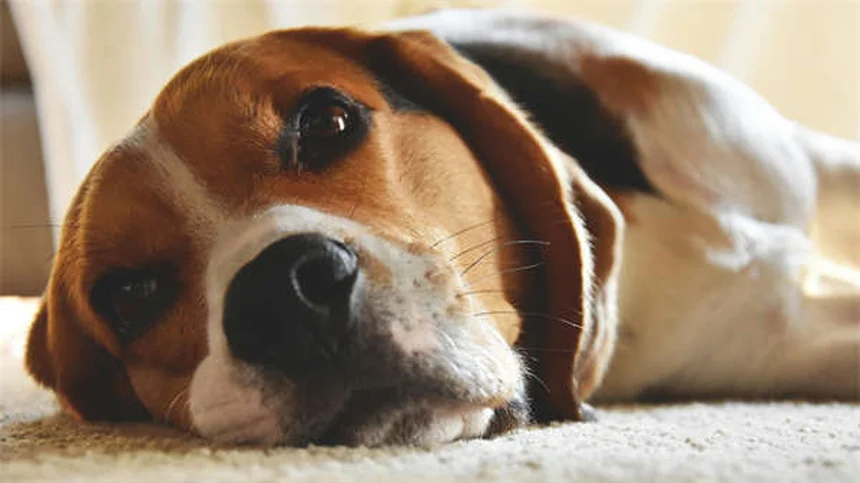Why do dogs do the I love you stretch? The answer is simple: it's one of the sweetest ways your pup shows affection! When your dog greets you with that classic downward dog pose - butt in the air and front legs stretched out - they're basically saying I missed you! in dog language. I've noticed my own dog does this every evening when I come home from work. At first I thought he was just stretching after a nap, but then I learned there's so much more to it. This special stretch combines physical need with emotional connection - they're loosening up their muscles while expressing happiness at your return. The coolest part? Many dogs will develop this habit specifically for their favorite humans. If you reward the behavior with attention or treats (like I accidentally did with my pup), they'll keep doing it just to see you smile. It's our furry friends' way of starting the reunion with some positive vibes!
E.g. :Bringing Home a New Puppy: Essential Tips for First-Time Owners
You know the scene - you walk through the door after work, and there's Fido with his butt in the air and front paws stretched out like he's doing puppy yoga. This classic "I love you" stretch is one of the cutest ways dogs show affection. But why do they do it?
Let me break it down for you. When your dog does this stretch toward you, it's like getting a warm hug. They're relaxed, happy to see you, and ready for some quality time together. Think of it as their way of saying "Hey buddy, I missed you!" while getting a good stretch in.
Here's something interesting - this behavior actually serves multiple purposes:
Ever notice how your dog seems to time this perfectly with your arrival? That's no coincidence. Dogs are brilliant at reading our routines. If you typically give them attention when they stretch, they'll keep doing it. Smart cookies, aren't they?
 Photos provided by pixabay
Photos provided by pixabay
Dogs communicate volumes through their posture. That downward dog pose isn't just for show - it's packed with meaning. Researchers have found that this particular stretch:
| Situation | What It Means |
|---|---|
| After waking up | Just getting the kinks out |
| When you arrive home | "I'm so happy to see you!" |
| Around other dogs | "Let's be friends" |
Did you know some dogs even develop their own unique stretch routines? My neighbor's golden retriever does this hilarious full-body wiggle before stretching - it's like his personal happy dance.
Here's something important to remember: not all stretches are created equal. While most are positive signs, sometimes stretching can indicate discomfort. For example:
If your dog keeps stretching the same leg repeatedly, they might have joint pain. Or if they stretch their belly frequently, it could signal digestive issues. But don't worry - these cases are usually accompanied by other signs like whining or loss of appetite.
Want to make this natural behavior into a cool party trick? You totally can! Many dogs learn to stretch on command with simple positive reinforcement. Here's how I taught my pup:
1. Wait for them to naturally stretch
2. Say "Stretch!" as they do it
3. Immediately reward with a treat
4. Repeat until they associate the word with the action
Before you know it, you'll have a dog who can show off their flexibility on command. Just try not to laugh when they do it with such dramatic flair!
 Photos provided by pixabay
Photos provided by pixabay
Dogs are masters at picking up on our patterns. If you consistently reward a behavior, they'll offer it more often. It's like when you accidentally teach your dog to beg by giving table scraps - except this time, you're doing it on purpose!
Here's a pro tip: Use an excited, high-pitched voice when giving the command. Dogs respond better to happy tones. And always keep training sessions short - about 5 minutes max. We want this to stay fun for both of you!
While the "I love you" stretch is adorable, it's just one of many ways dogs express their feelings. Some other common signs of canine affection include:
Every dog has their own love language. My sister's beagle isn't much of a stretcher, but he'll climb right into your lap and sigh contentedly. That's his special way of saying "You're my person."
Want to better understand what your pup is telling you? Pay attention to their whole body, not just the stretch. A happy, relaxed dog will have:
- Soft, relaxed eyes
- A gently wagging tail
- Loose, wiggly body movements
- Possibly a slightly open mouth with tongue out
See how much you can learn from just observing? Dogs may not speak English, but they're excellent communicators in their own way. The key is taking time to understand their unique personality and habits.
 Photos provided by pixabay
Photos provided by pixabay
You might wonder - is this stretch really about love, or is it just a physical need? The answer is... both! When directed at you, it's absolutely a sign of affection. Think about it - dogs don't stretch this way at furniture or random objects. They save it for their favorite people.
Here's a fun fact: Puppies often learn this stretch from watching their mothers. It starts as a submissive gesture ("I'm no threat") and evolves into a greeting between loved ones. Pretty cool how behaviors develop, right?
Ever feel tempted to get down on the floor and stretch with your dog? Go for it! Many dogs see this as an invitation to play or bond. Just be careful not to startle them if they're older or have joint issues.
I sometimes do a mini stretch when greeting my dog in the morning. She gets all excited and starts her happy dance. It's our little ritual that makes both of us smile. These small moments of connection are what make having a dog so special.
Those first few minutes when you come home are golden opportunities for bonding. Instead of rushing through them, try this:
1. Get down to your dog's level
2. Let them initiate contact (whether it's stretching, licking, or leaning)
3. Speak softly and pet them gently
4. Take a moment to just enjoy being together
This simple routine can strengthen your relationship more than you might think. Dogs thrive on consistency and positive attention. And let's be honest - it's pretty great for humans too!
Remember, not all dogs are big stretchers - and that's okay! Some breeds are more demonstrative than others. For example:
- Retrievers tend to be very physical in their affection
- Herding dogs might show love by staying close to you
- Small breeds often prefer lap cuddles over big stretches
The important thing is recognizing and appreciating how your unique dog chooses to connect with you. Whether it's through stretching, snuggling, or bringing you their grossest chew toy, it's all love in dog language.
Ever wonder why this stretch seems so universal among dogs? Let's take a quick trip back in time. This behavior actually has roots in wolf communication. In wolf packs, subordinate members would perform similar stretches to show submission to the alpha.
Now here's the fascinating part - over thousands of years of domestication, dogs transformed this submissive gesture into an affectionate greeting. What was once "I submit to you" became "I adore you". Isn't that amazing? Your living room yoga session with Fido is actually a beautiful example of how dogs adapted their natural behaviors to bond with humans.
Researchers have discovered that when dogs interact with their favorite humans, their brains release oxytocin - the same "love hormone" that floods human brains when we hug our kids. This explains why your dog's stretch greeting feels so heartwarming.
Here's a cool experiment you can try: Next time your dog does the stretch, maintain eye contact and smile. You'll often see their tail wag faster and their whole body wiggle with joy. That's the oxytocin kicking in for both of you! It's like nature's way of ensuring we keep loving our furry companions.
While the stretch is common, did you know greeting styles can vary by culture? In some parts of the world, dogs have developed unique ways to say hello:
| Region | Common Greeting Behavior |
|---|---|
| Japan | Deep bow with front legs extended |
| Italy | Excited jumping with lots of vocalization |
| Middle East | Gentle nose touches |
Isn't it wild how environment shapes even how dogs behave? My friend who moved from Tokyo to Chicago was amazed at how much more physically demonstrative American dogs tend to be. Her Shiba Inu still greets with that characteristic Japanese bow, while my Labrador nearly knocks me over with his stretch-and-leap combo!
Now you might be thinking - "But my dog never does this stretch!" That's completely normal too. Some factors that influence greeting styles include:
- Breed tendencies: Some breeds are naturally more reserved
- Early experiences: Dogs from shelters might take longer to show affection
- Individual personality: Just like humans, every dog is unique
The important thing is recognizing and appreciating your dog's unique way of connecting. Whether it's through stretching, gentle nudges, or simply sitting close by, it's all love in their language.
Those first few moments when you reunite with your dog are golden opportunities for bonding. Here's how I've made them extra special with my pup:
We have this little routine where I kneel down to his level when he stretches. I'll gently scratch his favorite spot (right above his tail) while saying "Who's my good boy?" in that silly high-pitched voice we all use with pets. This consistent positive interaction has strengthened our bond tremendously.
You can create your own version too! Maybe it's a special treat you only give during greeting time, or a particular toy you bring out. These small rituals mean the world to your dog and create lasting memories for you.
Want to encourage more of those adorable stretch greetings? Here's a professional trainer's trick I learned:
Always respond enthusiastically when your dog offers the behavior naturally. Your excitement tells them "Yes! This is exactly what I want!" Over time, they'll associate stretching toward you with all those wonderful feelings of praise and attention.
But here's the key - keep it genuine. Dogs are incredibly perceptive and can tell when we're just going through the motions. When my dog stretches, I make sure to put down my phone and give him my full attention for at least 30 seconds. Quality over quantity always wins with our canine companions.
While most stretches are happy greetings, sometimes they can indicate your dog needs something. Here are a few scenarios I've learned to recognize:
If the stretch seems exaggerated or held too long, your dog might be trying to tell you they need to go outside. My lab does this "super stretch" with an intense stare when he really has to pee! Or if the stretch is followed by persistent pawing at you, they might be asking for playtime or food.
Becoming fluent in your dog's particular stretch vocabulary takes time, but it's so worth it. You'll start noticing subtle differences in their posture, duration, and accompanying behaviors that clue you in to exactly what they're communicating.
As a responsible pet owner, it's good to be aware that sometimes stretching can indicate discomfort. Here's what to watch for:
- Repeated stretching of one particular area might signal joint pain
- Stretching combined with whining could mean digestive issues
- Stiff movements during the stretch might indicate arthritis in older dogs
But don't panic! These cases are usually accompanied by other symptoms. My vet friend always says, "One stretch is a greeting, a pattern of unusual stretching warrants attention." Regular check-ups and knowing your dog's normal behavior are the best prevention.
There's actual science behind why that morning stretch greeting makes us feel so good. When we interact with happy, relaxed dogs, our bodies experience:
- Decreased cortisol (the stress hormone)
- Increased serotonin and dopamine (feel-good chemicals)
- Lower blood pressure
- Improved mood and reduced anxiety
No wonder coming home to that wagging tail and stretchy greeting can turn around even the worst day! It's like nature's perfect stress-relief package wrapped in fur. I know on my toughest workdays, that first doggy hello is often exactly what I need to reset.
Every time your dog chooses to greet you with that vulnerable, open stretch, they're demonstrating deep trust. And when we respond with affection and attention, we reinforce that trust.
This creates a beautiful cycle of positive interaction that strengthens your bond over time. My dog has gone from tentative shelter pup to confident companion, and I can track his progress through how freely he now offers those full-body stretches when I walk in the door. There's no better feeling than earning a dog's complete trust.
E.g. :Understanding Dog Stretching: From Greetings to Pain Signals ...
A: Absolutely! While dogs stretch for various reasons, when they direct this particular stretch toward you, it's absolutely a loving gesture. Think about it - they don't do this to furniture or random objects. I've observed my dog only does his full "welcome home" stretch for family members, never for strangers. Animal behavior experts confirm this stretch releases happy hormones in dogs while signaling they feel safe and comfortable with you. It's like getting a warm, wiggly hug in dog language!
A: Go for it! Many dogs see this as an invitation to bond. I often do a mini stretch when greeting my dog in the morning, and she gets super excited. Just remember to keep it gentle - no sudden movements that might startle them. Make sure to maintain eye contact and use a happy voice. This mirroring behavior can actually strengthen your connection. Pro tip: If your dog is older or has joint issues, maybe just crouch down instead of full stretching.
A: While most dogs naturally stretch, whether they'll do the dramatic "I love you" version depends on personality and breed. From my experience, retrievers and spaniels tend to be the most expressive stretchers. But here's the cool part - you can encourage any dog to stretch more through positive reinforcement. Start by rewarding natural stretches with treats and praise. Soon they'll associate stretching with good things and offer it more often. Just don't force it - some dogs show love in other ways!
A: This is actually super sweet - your dog has created a special greeting ritual just for you! Dogs are brilliant at reading our routines. If you typically give attention when they stretch (like I do with my goofball), they'll save this behavior for your return. It's their way of saying "Our reunion is the highlight of my day!" Some behaviorists call this "anticipatory stretching" - they're getting ready for fun times with their favorite human. Try noticing what usually happens right after the stretch - playtime? Dinner? That's the reward they're anticipating!
A: While most stretches are perfectly normal, pay attention to unusual patterns. If your dog keeps stretching one particular leg or seems uncomfortable, it's worth checking with your vet. I once noticed my dog stretching his belly area repeatedly - turned out he had mild gas. But here's how to tell the difference: Happy stretches are loose and wiggly, while pain-related stretches tend to be stiff and repeated. Always look at the whole picture - is their tail wagging? Are they avoiding pressure on a certain area? When in doubt, a vet visit never hurts!
Recommended
Bringing Home a New Puppy: Essential Tips for First-Time Owners
Rabbit Runny Nose: Causes, Symptoms & Treatment (Vet Approved)
Essential Cat Vaccines: Core Shots Every Pet Parent Should Know
Holland Lop Care Guide: 7 Essential Tips for Happy, Healthy Bunnies